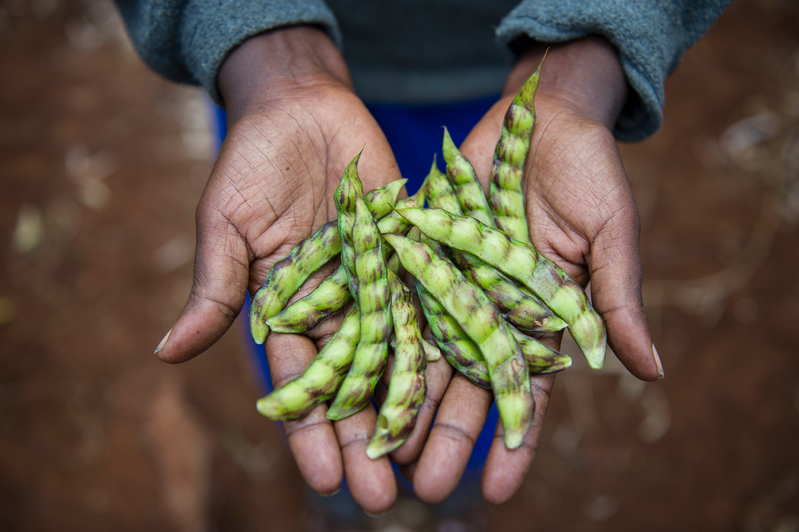Learning objectives of this guide
• To understand how to increase the amount of water stored in the soil
Learning outcomes
• This how to guide on water conservation will enable you to understand how to conserve the limited water received on the farm
• This how-to guide deals with methods to increase the amount of water stored in the soil profile by trapping or holding rain where it falls, or where there is some small movement as surface run-off.

The techniques described in this section all involve some re-shaping of the soil surface, and so require
substantial inputs of energy. In many cases, it is not practical to use only hand labour, and animal-drawn implements are necessary, or tractors. Some of the methods show promise of increased crop yields so a major feature of experimental trials is the search for cheap, simple, low energy methods and machines.
Broad Bed and Furrow System (BBF)

In a broad bed-and-furrow system, runoff water is diverted into field furrows (30 cm wide and 30 cm deep). The field furrows are blocked at the lower end. When one furrow is full, the water backs up into the head furrow and flows into the next field furrow. Between the field furrows are broad beds about 170 cm wide, where crops are grown.
- BBF is majorly used to control erosion and to conserve soil moisture in the soil during rainy days.
- This system is particularly suitable for the vertisols. (heavy black clay soils sometimes called cotton soils).
- The technique works best on deep black soils in areas with dependable rainfall averaging 750 mm or more.
Click here to learn more on broad bed and furrow system
Click here for additional information on broad bed and furrow system
Contour furrows (also known as contour bunds and desert strip farming)

These are key in controlling runoff velocity and intercepting the runoff flowing down the slope by an embankment. The embankment may be closed, or open, surplus arrangements are provided whenever necessary.
Click here to learn the specifications of creating contour bunds
Contour Trenches

These are 2 by 1 by 1 m3 and 5 to 10 feet vertical distance. trenches that are excavated in contours and excavated soil is used to form bunds in the down line. They are suitable where the slope of land is greater than 33.33%., which helps to reduce the velocity of water as well as soil erosion.
Click here to learn how to make contour trenches
Zai pits

These are pits that are 20-30 cm in width, 10-20 cm deep and spaced 60-80 cm apart [dimensions of the pits can vary] dug during the dry season and filled with mulch such as crop residue or manures. These act as micro-water catchments, holding about four times the amount of water that normally runs off the land. Farmers create in the hardpan soil using hand tools or plows and animals.
Click here for key information on zai pits
References
· http://agritech.tnau.ac.in/agriculture/agri_majorareas_dryland_agroengg_measures.html
· http://www.fao.org/3/t0321e/t0321e-11.htm#TopOfPage
· https://www.echocommunity.org/en/resources/d676d269-5f1f-47f1-812a-ed6d3e253989
 Get Involved
Get Involved

Discussion
10000